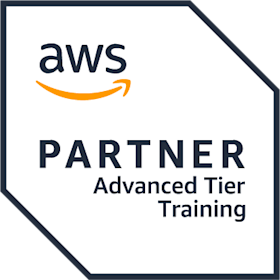Course subjects
Module 1: Introduction to Amazon Web Services
Summarise the benefits of AWS
Describe differences between on-demand delivery and cloud deployments
Summarise the pay-as-you-go pricing model
Module 2: Compute in the Cloud
Describe the benefits of Amazon Elastic Compute Cloud (Amazon EC2) at a basic level
Identify the different Amazon EC2 instance types
Differentiate between the various billing options for Amazon EC2
Describe the benefits of Amazon EC2 Auto Scaling
Summarise the benefits of Elastic Load Balancing
Give an example of the uses for Elastic Load Balancing
Summarise the differences between Amazon Simple Notification Service (Amazon SNS) andAmazon Simple Queue Services (Amazon SQS)
Summarise additional AWS compute options
Module 3: Global Infrastructure and Reliability
Summarise the benefits of the AWS Global Infrastructure
Describe the basic concept of Availability Zones
Describe the benefits of Amazon CloudFront and Edge locations
Compare different methods for provisioning AWS services
Module 4: Networking
Describe the basic concepts of networking
Describe the difference between public and private networking resources
Explain a virtual private gateway using a real life scenario
Explain a virtual private network (VPN) using a real life scenario
Describe the benefit of AWS Direct Connect
Describe the benefit of hybrid deployments
Describe the layers of security used in an IT strategy
Describe which services are used to interact with the AWS global network
Module 5: Storage and Databases
Summarise the basic concept of storage and databases
Describe benefits of Amazon Elastic Block Store (Amazon EBS)
Describe benefits of Amazon Simple Storage Service (Amazon S3)
Describe the benefits of Amazon Elastic File System (Amazon EFS)
Summarise various storage solutions
Describe the benefits of Amazon Relational Database Service (Amazon RDS)
Describe the benefits of Amazon DynamoDB
Summarise various database services
Module 6: Security
Explain the benefits of the shared responsibility model
Describe multi-factor authentication (MFA)
Differentiate between the AWS Identity and Access Management (IAM) security levels
Describe security policies at a basic level
Explain the benefits of AWS Organisations
Summarise the benefits of compliance with AWS
Explain primary AWS security services at a basic level
Module 7: Monitoring and Analytics
Summarise approaches to monitoring your AWS environment
Describe the benefits of Amazon CloudWatch
Describe the benefits of AWS CloudTrail
Describe the benefits of AWS Trusted Advisor
Module 8: Pricing and Support
Understand AWS pricing and support models
Describe the AWS Free Tier
Describe key benefits of AWS Organisations and consolidated billing
Explain the benefits of AWS Budgets
Explain the benefits of AWS Cost Explorer
Explain the primary benefits of the AWS Pricing Calculator
Distinguish between the various AWS Support Plans
Describe the benefits of AWS Marketplace
Module 9: Migration and Innovation
Understand migration and innovation in the AWS Cloud
Summarise the AWS Cloud Adoption Framework (AWS CAF)
Summarise six key factors of a cloud migration strategy
Describe the benefits of various AWS data migration solutions, such as AWS Snowcone, AWS Snowball, and AWS Snowmobile
Summarise the broad scope of innovative solutions that AWS offers
Summarise the five pillars of the AWS Well-Architected Framework
Module 10: AWS Certified Cloud Practitioner Basics
Please note: This is an emerging technology course. Course outline is subject to change as needed.


